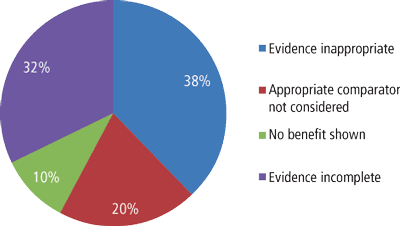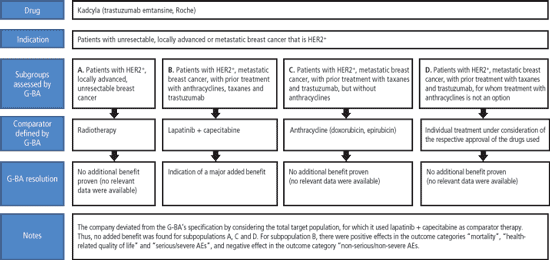Drug Benefit Assessment Challenges Market Access in Germany
PTSM: Pharmaceutical Technology Sourcing and Management
The authors take a look at some of the recent developments in the German pharmaceutical market.
Westend61Premium/Getty Images

*Editor's Note: This article appeared in Pharmaceutical Technology Europe in November 2014
Manufacturers exploring opportunities in global markets face dynamic demographic and disease trends, changing market demands, and evolving regulatory requirements-all of which differ from one country to another. While emerging markets continue to represent a new channel of demand for pharmaceutical products, manufacturers have quickly realized that significant attention must still be given to more established markets, such as Germany. It’s no longer sufficient to expect that regulatory data from prospective randomized clinical studies alone will be enough to convince payers to provide a price premium for new products. In this article, the authors take a look at some of the recent developments in the German pharmaceutical market, identify pricing and reimbursement challenges, and discuss strategies manufacturers should consider for sustainable success.
Overview of German Market and AMNOG
Germany is the third largest pharmaceutical market worldwide and accounts for approximately 23% of the European pharmaceutical market (1). Of equal importance to manufacturers, drug prices in Germany are often used as reference prices in 19 other countries. Taken together, gaining access to this market at an acceptable price has major implications for long-term success. In a cost-constrained economy, the German government has taken steps to reduce healthcare spending, and unfortunately for manufacturers, one way they have sought to do this is through The Act on the Reform of the Market for Medical Products (Arzneimittelmarkt-Neuordnungsgesetz-AMNOG). This piece of legislation was enacted in 2011 and mandates a more rigorous benefit evaluation procedure for new pharmaceuticals (and their subsequent label expansions), thereby adding significant challenges to the market access process.
In AMNOG’s new system, manufacturers continue to set the initial price for new prescription drugs after regulatory approval. This price is valid for one year. During this time, the manufacturer’s value dossier is reviewed by the Federal Joint Committee (G-BA), which represents the self-governance structure of the German healthcare system. With the help of the Institute for Quality and Efficiency in Health Care (IQWiG), an expert Health Technology Assessment (HTA) body, the G-BA determines the level of added benefit of the new drug relative to the appropriate comparative therapy (ACT) chosen by the G-BA as well as the certainty of evidence presented by the manufacturer. A brief description of these two inputs that go into the G-BA’s final decision is included in Table I. Patient-relevant criteria for additional medical benefit include improving health, extending survival, shortening the burden of illness and reducing side effects, or improving quality of life, and are outlined in the IQWiG methodology paper (2). Originally, the law was written to include the possibility that patented products already on the market would have to undergo retrospective benefit assessments; however, manufacturers were recently spared from this potential headache (3).
Table I: Decision criteria for G-BA’s/IQWiG’s benefit assessment.
Input
Categorization
Factors shown to impact categorization decision
Qualitative certainty of results
Proof, indication, hint or no proof
Number of appropriate clinical studies available; Use of valid measurement instruments; Risk of bias (e.g., non-blinding); Endpoint type (e.g., hard, surrogate)
Quantitative extent of added benefit
Major, considerable, minor, non-quantifiable, no added benefit, or reduced benefit
Effect size at outcome level, confidence interval associated with effect
Once the G-BA reaches a final conclusion, pricing negotiations begin with the statutory health insurance (SHI) umbrella organization, GKV
SV (Gesetzliche Krankenversicherung-Spitzenverband), which negotiates on behalf of all SHIs and also private sickness funds in Germany. It is important to highlight that the ACT is not only used by the G-BA in its assessment, it is also the price anchor for these negotiations. For drugs found to have no added benefit, their price is capped in reference to the price of the comparator. Reference pricing to the comparator can be either advantageous if the ACT is already a high-priced therapy or devastating if the ACT is a generic drug. Thus, manufacturers looking to enter breakthrough therapeutic areas where the current standard treatment is a generic will be particularly challenged. Therapeutic products that demonstrate added benefit are priced above the ACT but may still face a minimum price reduction of 7% (formerly 16%) by law, unless it has been replaced as part of the price negotiations. Unfortunately for manufacturers, while the number of products that have gone through the entire assessment and pricing process remains small since the law was enacted three years ago, early evidence suggests only limited correlation exists between benefit ratings and price reductions. Rather, G-BA’s benefit rating has primarily served as a door opener for price negotiations (4).
Snapshot of Benefit Assessments and Pricing Negotiations under AMNOG
As of May 2014, 79 products have been assessed by the G-BA within 169 patient subpopulations. More than 50% of these early benefit assessments have led to ‘no added benefit’ rulings by the G-BA (see Table II) (5). Not surprisingly, there has been considerable variance observed in the levels of additional benefit reported by pharmaceutical manufacturers and the G-BA. In contrast, the G-BA’s decisions have more closely resembled IQWiG’s recommendations with a few notable exceptions (e.g., belimumab, cabazitaxel, eribulin) (6). Reasons the G-BA has offered for ‘no proven added benefit’ include inadequate comparator, lack of a relevant study to back claims of benefit, lack of data on potential harms, and omission of data for relevant patient subpopulations. A more detailed breakdown of the G-BA’s negative rulings as of October 2013 is presented in Figure 1 (7).
Table II: G-BA decision breakdown on “Degree of Added Benefit” for new pharmaceuticals within a specific patient subpopulation (N=169).
Degree of Added Benefit
Percent of Cases
Major
0%
Considerable
10%
Minor
25%
Not quantifiable
7%
Lower
1%
Not proven
57%
As Figure 1 illustrates, even though the outcome of benefit assessment is a key driver of price negotiations, manufacturers have not always prepared dossiers adequately. This, in turn, compromises the outcome of the assessment and subsequent price that is agreed upon. Such problems with incomplete or inadequate evidence may be overcome as drug makers gain better understanding of the requirements. To this end, the Federal Joint Committee offers consultation opportunities for manufacturers to give advice on trial design (e.g., patient segmentation, comparator selections, and endpoints). Not all manufacturers, however, have communicated with the G-BA to discuss the technical issues and challenges around preparation of the benefit dossier, or earlier to discuss the clinical trial (6).
Figure 1: Reason for no proof of added benefit ruling for new pharmaceuticals within a specific patient subpopulation (N=113).

Despite the market access challenges that manufacturers have experienced so far, only a few products have been pulled despite negative G-BA rulings and demands for substantial rebates. Novartis became the most recent manufacturer to do this, withdrawing its oral anti-diabetic Galvus from the German market after failing to secure a mutually beneficial price with payers (8). Given the size and revenue potential associated with this marketplace, the fact that few products have been pulled is not surprising. However, Hagen Pfundner, the chairman of Germany’s pharma lobby VFA and head of Swiss drugmaker Roche’s German unit, believes that a recent update to the AMNOG legislation could lead to “an increasing number of opt-out decisions” (9). In the past, a product’s original launch price in Germany served as the published list price for other markets. This approach is no longer the case. Since April 2014, the newly negotiated reimbursement amounts are published as visible ex-factory prices, effectively replacing the original list prices as source for referencing. Drug makers fear the information could challenge the entire pricing framework within Europe (and globally) either causing a downward spiral in reimbursement across the region or heavy parallel exports from Germany to other countries. If this new law is not overturned, it poses a significant risk to profits in the industry, especially considering that price discounts have been as high as 70% following G-BA’s benefit assessment and range on average between 1630% (10). More broadly, the new rule reinforces the importance of manufacturers understanding the nuances of this market and having strategies in-place to achieve successful market access.
Recommendations for Manufacturers
While Germany is certainly not the only market that is enforcing more stringent pricing and reimbursement policies for new therapeutic products, it is perhaps scrutinizing the quality and appropriateness of clinical data more so than any other country. Taken together with the fact that other markets look to Germany to determine pricing, manufacturers should place a greater emphasis on G-BA’s recommendations when structuring clinical studies. To date, the majority of AMNOG submissions did not have much guiding input from the G-BA prior to clinical study design and were based on evidence generated on a pre-AMNOG world. Moving forward, proactively consulting with the G-BA to define the comparator(s), clinical endpoints and patient cohorts will be essential. Manufacturers need to do this early in product development, especially prior to starting Phase III trials. Internally, manufacturers should also enhance communication between regulatory and market access teams to strategically plan for both market authorization requirements and G-BA’s requirements.
Even before G-BA consultations, manufacturers need to give greater consideration to the product’s indication. While the indication does not determine how the benefit assessment is conducted, completed assessments indicate that it can influence the G-BA’s comparator choice and a pivotal trial’s relevance. For products with broad indications, IQWiG and the G-BA are demanding clinical data for multiple patient subpopulations and against multiple ACTs. For example, these commissioning bodies recently distinguished between four subpopulations and ACTs for Roche’s Kadcyla (see Figure 2) (11). Manufacturers that have failed to anticipate and include such data are seeing a significant reduction in the overall level of added benefit granted to their products (e.g., Pixuvri and Inlyta) (12). Moving forward, manufacturers will need to ensure that all relevant subpopulations have robust and statistically significant clinical endpoints to support reimbursement, with increasing demand for quality of life data. If the resources required to study multiple populations using multiple comparators are too great, pursuing a narrower indication for a clearly defined patient population and against a single comparator serves as a viable alternative.
Figure 2: Case summary of IQWiG's benefit assessment of Kadcyla.

Manufacturers will also have to keep in mind that every new indication for a product will trigger another round of benefit assessment and a new price negotiation. Here, attempts to negotiate a higher price with subsequent indications may be met with resistance by the GKV-SV and prove to be a significant challenge for manufacturers. Thus, drug makers should give greater consideration to the trade-off between a fast product launch and the highest value launch.
Aside from data collection and defining a product’s indication, manufacturers must also develop a solid pricing strategy earlier on in the product development process and have capabilities to better predict a products negotiated price. There is currently no formula regarding the rebate amount the pharmaceutical company has to grant on its retail price. Furthermore, while evidence demonstrating added benefit is required to avoid reference pricing, it is by no means the sole determinant of pricing decisions. Rather, the extent to which a product’s price will be marked down following a positive benefit assessment is largely dependent on its original launch price as well as the market size and price of the appropriate clinical comparator. As more products go through the product review and pricing process and as more data become available, manufacturers should consider developing algorithms to forecast the benefit assessment outcomes and the product’s final net price.
The first three years of the AMNOG reform have proven that demonstrating added benefit is no small feat for manufacturers, and while complaints continue to be heard from pharmaceutical stakeholders, the law shows no signs of slowing down. AMNOG has not only set new rules for reimbursement and pricing of pharmaceuticals in Germany, it also forces the industry to adapt at a global level, rethinking how it brings new products to market. Manufacturers that prepare thoroughly for benefit assessment and the negotiation processes within it will be best positioned for success.
Acknowledgement
The authors would like to thank Stefan Seliger, PhD, for his review and insights.
References
- German Pharmaceutical Industry Association/BPI, based on IMS World Review 2012.
- IQWiG, General Methods Version 4.1. (Nov. 28, 2013).
- G. Collier, March 24, 2014, A tweak or an outrage? Germany passes new pricing law, accessed Aug. 8, 2014.
- IMS Consulting, Pricing and Market Access Outlook–2013 edition.
- LEO Pharma Germany, It´s difficult to meet HTA criteria according AMNOG - reason why? (June 10, 2014).
- J. Ruof, et al., Eur J Health Econ. 15, pp 577-589 (2014).
- PRMA Insights, PRMA Insights Focus: Pricing and Reimbursement Success in Germany under AMNOG (2013)
- F. Kermani, “Novartis Pulls Galvus From Germany After Failed Price Negotiations,” The Pink Sheet Daily (June 19, 2014).
- L. Burger and T. Severin, “Germany’s stance on pricing threatens drug firm profits,” Reuters, Feb. 18, 2014, accessed Aug. 14, 2014.
- D. Bahr and T. Huelskoetter, “Comparing the Effectiveness of Prescription Drugs: The German Experience” (May 21, 2014), accessed Aug. 14, 2014.
- Institute for Quality and Efficiency in Health Care, Trastuzumab emtansine – Benefit assessment according to §35a Social Code Book V
- C. Henry, “Oncology drugs under AMNOG,” PMLive (May 7, 2014).
About the Authors
Jill E. Sackman, DVM, PhD, senior consultant, and Michael Kuchenreuther, PhD, research analyst, at Numerof & Associates, Inc., St. Louis, MO, www.nai-consulting.com.
Transformations in Drug Development for Cell and Gene Therapies
March 28th 2025As a recognized leader in immunophenotyping for clinical trials, Kevin Lang from PPD discusses how spectral flow cytometry is transforming drug development, particularly in cell and gene therapies like CAR-T. He also dives into his award-winning research, including his 2024 WRIB Poster Award-winning work, and his insights from presenting at AAPS PharmSci360.
Advancing Clinical Trials with Spectral Flow Cytometry: A Conversation with Kevin Lang
March 28th 2025As a recognized leader in immunophenotyping for clinical trials, Kevin Lang from PPD discusses how spectral flow cytometry is transforming drug development, particularly in cell and gene therapies like CAR-T. He also dives into his award-winning research, including his 2024 WRIB Poster Award-winning work, and his insights from presenting at AAPS PharmSci360.
Pharmaceutical Tariffs Are Imminent: How Industry is Bracing for Impact
April 16th 2025On April 14, 2025, the Trump Administration launched a national security-driven investigation into pharmaceuticals, a move that will likely result in tariffs being placed on pharmaceutical drugs, ingredients, and other components that are imported from outside of the United States.